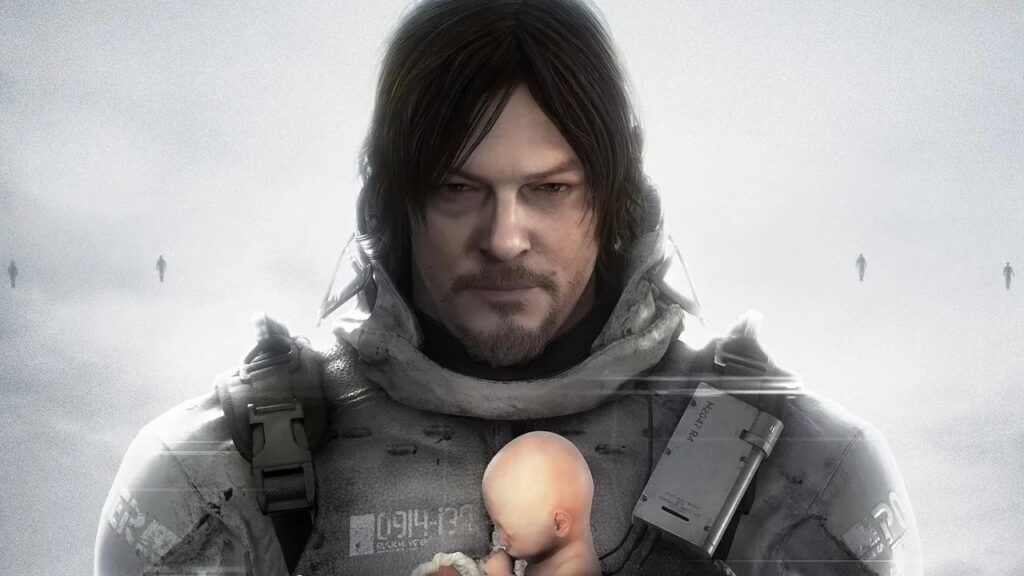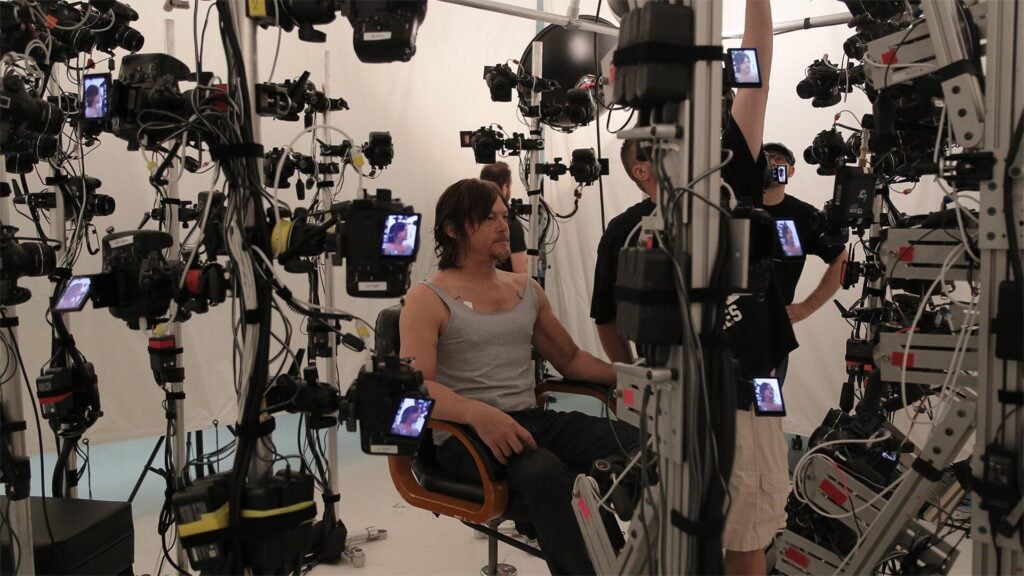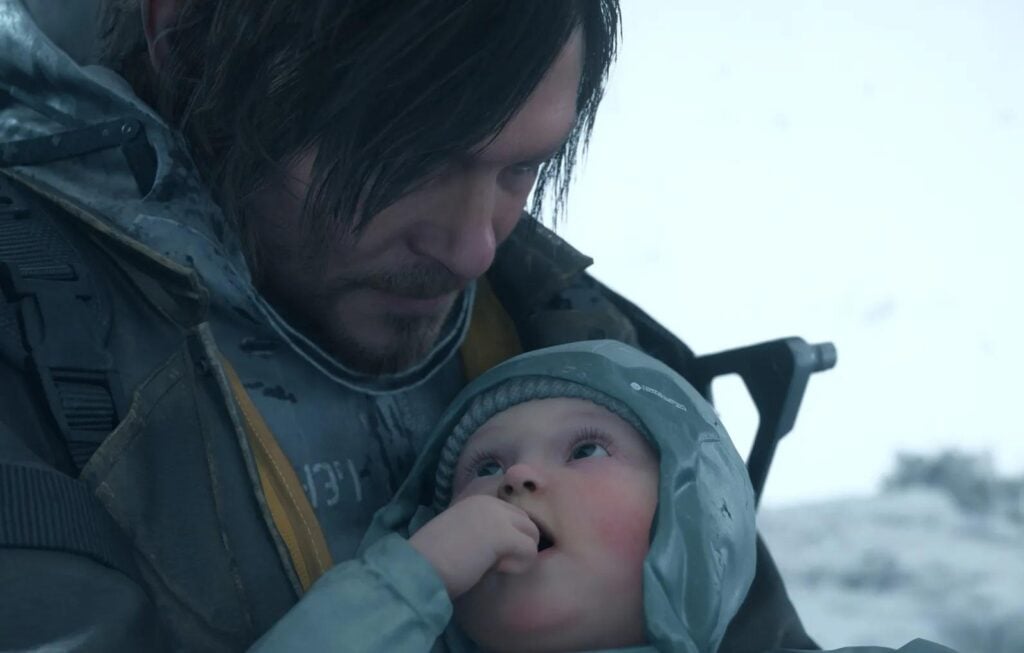Few game reveals have left us as curious, or as divided, as Death Stranding did. Remember those first trailers, where everyone tried to piece together what on earth was happening with the baby, the beach, and those handprints in the sand? It sparked near-instant obsession and a million questions. How did such a wild idea become reality? What challenges shape a game this unorthodox? Today, let’s peel back the layers and walk through the extraordinary journey of the making of Death Stranding, together.

- It explores deep themes like isolation, death, and human connection through stunning visuals and emotional storytelling.
The Making of Death Stranding: Inside Kojima’s Creative Odyssey
Each step in this production felt like a leap into the unknown. From Kojima’s ambitious vision after leaving his old studio to the weeks we spent picking up digital packages across post-apocalyptic America, every detail has a story. In true Death Stranding fashion, this is a tale about connection, risk, and the kind of gaming magic that only happens when a team bets everything on something new.
1. Hideo Kojima’s Vision: The Birth of Death Stranding
Right after his famous break from Konami, Hideo Kojima wasted no time founding Kojima Productions. Instead of playing it safe, he embraced the themes of connection and isolation, feelings he knew all too well at that moment. If you’ve ever felt lost after starting over, you’ll relate: Kojima traveled the world, met creators, and channeled those emotions into Death Stranding. Books, dystopian movies, and global events all fed into his early concept of “strands” binding people together across barren landscapes.
2. World-Building and Storytelling: Crafting the Strange and Beautiful
By the time we first explored Death Stranding’s world, the bones had already been carefully set. In the making of Death Stranding, Kojima and his team dreamed up an America both familiar and utterly alien; a world shaped by loss, baby bridges (those unforgettable BBs), rain that ages everything, and spectral BTs floating just out of reach. Writing the story meant walking a tightrope: making things strange enough to intrigue but grounded enough to resonate. The narrative’s twists and weirdness? Each was picked to make us feel both alone and gently pulled toward hope.

- The game features seamless transitions between gameplay and cutscenes, creating a fully immersive cinematic experience.
3. Technical Innovation: Building Death Stranding’s World
Choosing the right technology is half the battle, especially for something this ambitious. Kojima Productions partnered with Guerrilla Games to use the Decima Engine, a decision that let them build enormous, photoreal landscapes and experiment with wild weather, steep terrain, and how characters move. The motion capture effort alone was a saga, with actors donning suits and gear for hours to capture the subtlest gesture. It’s why when Norman Reedus sighs or pulls a face, it doesn’t just look like Sam; it feels like him. Every sound, from haunting music to the echo of Sam’s boots on wet stone, got special care.
4. The Legendary Cast: Bringing Characters to Life
Getting names like Norman Reedus, Mads Mikkelsen, and Léa Seydoux wasn’t luck. In the making of Death Stranding, Kojima personally reached out, blending old friendships (like with Guillermo del Toro) and new collaborations. Watching behind-the-scenes moments, it’s clear: these actors didn’t just read lines; they gave a part of themselves. Endless motion capture sessions and even backstage brainstorms helped shape the story’s emotional highs and lows. That’s why, when we see a tear, a confused glance, or that first smile, it lands differently.

- The asynchronous multiplayer system allows players to indirectly assist each other by leaving structures and items in a shared world.
5. Gameplay Innovation: Creating A New Genre
Creating a “strand-type” game, whatever that meant at first, was a giant risk. Kojima’s team played with prototypes for months, questioning if delivering packages and building bridges could really anchor an epic. Early playtests were rough, with feedback pushing them back to the drawing board more than once. Yet, that openness made the social systems, the “likes,” and the fragile sense of player connection what they are today. The team wanted every journey to feel meaningful and every player to leave a mark on another’s world.
6. Challenges and Surprises: Behind-the-Scenes Realities
Like any daring project, the making of Death Stranding hit hard snags. The clock was always ticking, and stories circulated about crunch time as launch drew close. Some game systems were cut or rebuilt late in development. There’s one classic story: a design so wild even Kojima had to laugh, and admit it wouldn’t work. Yet, it was Kojima’s transparent leadership, encouraging creativity and calculated risk, that helped the team keep its heart even when things got tough.

- The music and ambient sound design work together to evoke feelings of isolation and hope.
7. The Music and Sound: Setting the Tone
No Death Stranding session would feel the same without its music. Ludvig Forssell shaped the main score in the making of Death Stranding, blending atmospheric synths with haunting piano. Then there’s the hand-picked licensed music (hello, Low Roar fans!) which sometimes kicks in just as we crest a lonely ridge. Kojima, a known audiophile, poured just as much detail into rain sound, BB gurgles, and the nightmarish clicks of unseen BTs, keeping us on edge or soothing us at just the right moments.
8. Reception, Legacy & DS2 Hints: Looking Back and Ahead
Upon release, Death Stranding turned heads. Some called it a masterpiece; others, too weird for their taste. But everyone agreed: it was unforgettable. The makings of DS2 are already influenced by the lessons and the wild courage of the original. We’re eager to see what Kojima Productions tries next, especially with returning cast, new tech, and whatever unpredictable twist is waiting just over the horizon.

- Its themes of connection and cooperation influenced how narrative games approach social interaction.
9. Closing Things Up: Innovation, Legacy, and the Future
The story behind Death Stranding is one of ambition, fear, and ultimately, connection; not unlike the journey we all take playing it. Sometimes, the road is rocky. Sometimes, the destination isn’t clear. Yet the risks Kojima and his crew took built something no one had played before. We hope this look inside made you appreciate the game, and maybe your own creative leaps, a little more. If you’ve heard a fact, story, or moment from the making of Death Stranding that stuck with you, don’t hold back; drop it below and keep this conversation moving, strand by strand.
Read about behind the scenes and making of well-know franchises in Gamerative.
10. FAQs: Your Top Making of Death Stranding Questions
Q1: Did the team ever worry the game was “too different” and would fail?
A: Absolutely. Throughout development, there was hesitation, but Kojima reassured the team: it was better to create something risky than something safe and forgettable.
Q2: How involved were the actors in story development?
A: Several actors contributed creative input beyond their roles, sometimes even helping shape dialogue and emotional scenes during filming sessions.
Q3: What was the hardest technical hurdle the team faced?
A: Terrain traversal and simulating realistic movement across rough ground challenged both the animation and gameplay teams right up until launch.
Q4: How big was the initial team that started Death Stranding?
A: Kojima Productions started small, with a core group of about 40 people before ramping up with more hires as the project grew.



